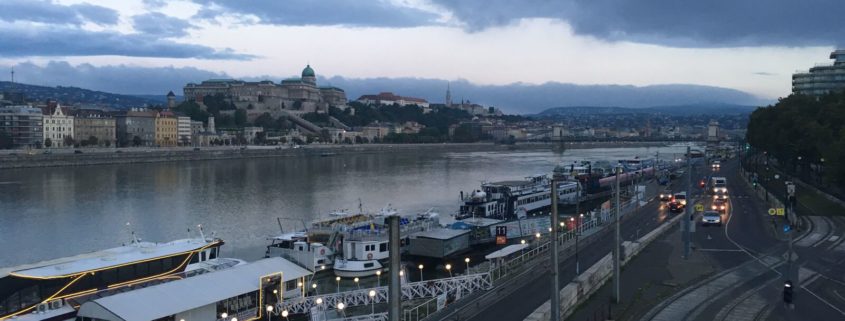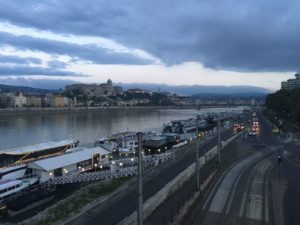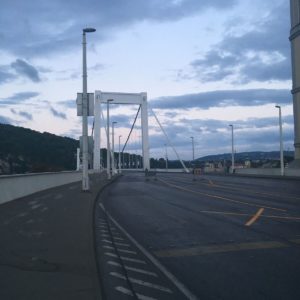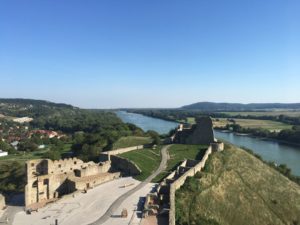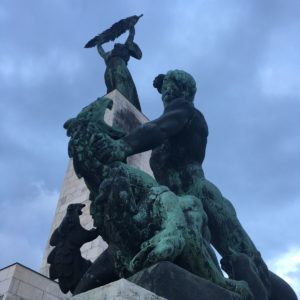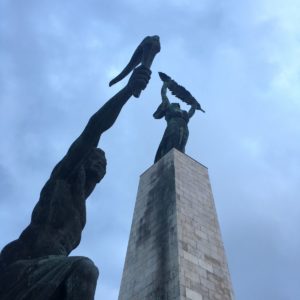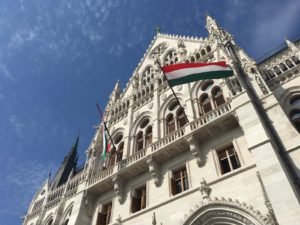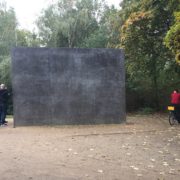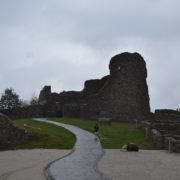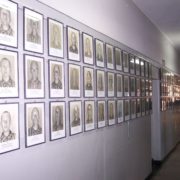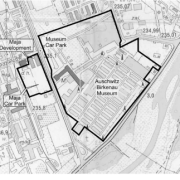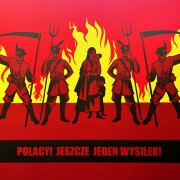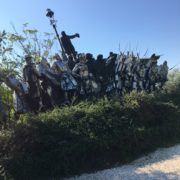The Birth of an Idea
By Raymundo Juarez
At 6:00, on a Saturday morning, my alarm rang the new day in, waking me up for one of my regular A.M. runs. The circumstances, however, were not regular. This was my first morning waking up in a foreign country, having landed in the city of Budapest less than 12 hours before. Determined I was to make the most of our three-day stay in the capital of Hungary, I didn’t waste any time. I dressed, took the elevator down, and sped off from the Hotel Roombach where I was staying with 18 other American students participating in Syracuse University’s ‘Exploring Central Europe’ program. Budapest was to be only the first of several cities we visited in the part of Europe overshadowed by the distinguished societies hundreds of kilometers to the west.
Stepping into the crisp morning air, (accented with smells emanating from the kebab stand down the street) I commenced my route with clear intentions. I wanted to see the Danube, the ancient and venerable river that runs from its origin in the Black Forest of Germany, through Central and Eastern Europe, all the way to the Black Sea. It has long been both a separating and unifying element of the landscape; a centrifugal and centripetal force. Some of the first human settlements coalesced along this natural resource, and through the course of their development into modern societies, they utilized it as a conduit for the exchange of goods, ideas, and people. And when those mutual interests didn’t align… Greeks and Persians, Romans and Barbarians, Austrians and Turks: they all fought along this natural border, and based territorial claims on its eminence.
Here I was centuries later, struggling to make sense of the modern condition, and standing on the river’s low-lying eastern bank. Looking across I saw Buda Castle, Matthias Church, and the Chain Bridge that linked the two parts of the city: Buda and Pest. All enticing destinations, but to the left of it all was a sight whose mystique made up for its plainness: a statue on top of a massive green monolith. I placed my bets that the best view of the city would be at its highest point, and I sped off again.
I crossed the Danube over the sepulchral Elizabeth Bridge to arrive at the foot of the monolith named “Gellert Hill,” and from there I ascended its man-made stone steps, passing cave entrances, neoclassical colonnades, and the occasional local on their morning stroll. Reaching the top with a shortage of breath, my attention turned for a moment to the unremarkable citadel fortress, before looking about 200 meters past towards that statue that captured my attention. A couple of minutes later, there I was. It was on the long end of the Citadel, a small flat area girded by railings. Here was an ivory colored obelisk crowned by a bronze female figure holding a palm leaf to the heavens. Forty meters below at her flanks were two smaller sculptures completing a trinity. The one on the right depicted a man in grips with a raptor, one hand at its throat, his other hand gripping a stone high, poised as if to deal the coup de grâce: the sculpture on the left portrayed a man stepping forward triumphantly with a torch in hand. There was an inscription on the monument in Hungarian that I couldn’t read, but
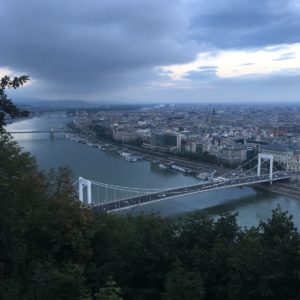
A view of Pest through the trees near the summit of Gellert Hill. The neogothic Hungarian Parliament is visible in the background.
standing there looking up at the lady holding the leaf up to the sky foregrounded by the victorious man, I felt something inexplicable. A transcendental, electric euphoria. A rush of blood to the heart, a sharpening of focus, the morning wind flowing across the back of my neck. I felt a connection to something deep within my subconscious that was something like the feeling you get when running.
There’s something about running that makes you feel free. I think it’s the feeling of being completely in sync with yourself. Every inhalation and exhalation of purity, the brave lunge forward and momentous foot step; the heightening of the senses. If you get a good rhythm going, you feel like you can run until the end of the Earth. It’s a freedom of movement, of security in your own body that is unparalleled. It is a connection with our deepest instincts, that when consummated feels as if Nike herself swept down from the sky to crown you with a laurel wreath.
This moment spawned some deeper questions alone at the top of Budapest: had the Árpád tribes once arrived at this Mount Sinai nestled at the foot of the Carpathian Mountains, after a long conquest of the Carpathian Basin to the south? Perhaps the Moravians, Romans, Celts, and countless others once stood on this summit and gazed out over the bold Danube snaking its way through the landscape, and perhaps they looked up at the Milky Way — and they questioned. And at Devin Castle in Slovakia, the 1000-year-old ruin we visited later in the trip that overlooks the confluence of the Danube and the Morava rivers; maybe its ancient inhabitants saw something there besides earth and water. Maybe!
Looking back at our group’s travels through former Austria-Hungary, this is still the defining moment of the journey, and as we visited more monuments and national sites of memory, I couldn’t help but be transported back to that moment on top of Gellert Hill. That transcendental sensation was there. Over and over, we witnessed that those sites meant different things to different people over time, and the appearance of the sites transmuted to reflect that. Such places, like the ideas they represent, are not immutable. They are phenomena that shift their material forms over time in relation to their cultural context. In the discursive currents of our human societies, memorials function as nexuses where hegemonic ideas in the collective consciousness coalesce and crystallize. We must
examine sites of memory judiciously as pedagogical instruments that perpetuate systems of power. We must be critical of the ideas they represent: whether they are benign or overtly ideological.
Back in Budapest, I consulted google to find more information about the Liberty Statue. I discovered the translation of the current inscription and learned that it had been changed since the statue was originally erected. It originally read:
To the memory of those all who sacrificed their lives for the independence, freedom, and prosperity of Hungary
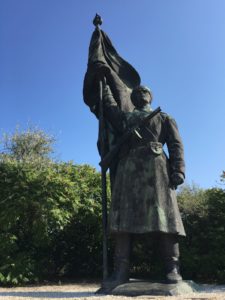
The statue of the liberating Soviet Soldier that was once a part of the Liberty Monument. It is now located along with other relics of the communist era in Memento Park.
Later I found that the monument was originally dedicated to the Soviet Union. Before 1989 the inscription read:
To the memory of the liberating Soviet heroes [erected by] the grateful Hungarian people [in] 1945.
During the communist period, the USSR perhaps meant to use this site to transmit to Hungarians Soviet heroism in their liberation from fascism. After 1989, the inscription was changed to its present form, and a ten-meter statue of a Soviet soldier that stood at the base of the obelisk was exiled, along with dozens of other communist-era sculptures, to Memento Park on the outskirts of the city.
During our tour of downtown Budapest, our group visited a more
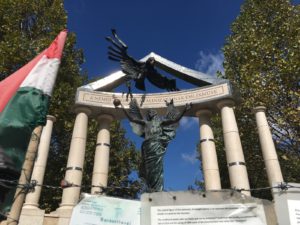
The Memorial to the victims of the German Invasion in Budapest. Note the counter-memorial in the foreground that points to Hungarian complicity in the Holocaust.
recent World War II monument known as the “Monument to the Hungarian Victims of the German Invasion.” Using similar imagery as the Liberty Statue, Nazi Germany is represented as a diving raptor ready to devour the nation. Notwithstanding the polemical debate surrounding the representation of “Hungarian victimhood” in the monument, the image of the predatory raptor as a threat to freedom formed a clear parallel.

